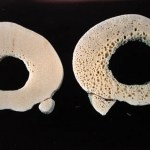Rodent
Image from the American Physiological Society's website.http://www.the-aps.org/mm/Conferences/APS-Conferences/2014-Conferences/…
As anticipated, the meeting today was excellent! Here are some highlights from today:
Dr. Michael Joyner (Mayo Clinic) spoke about how we should reconsider animal models that are used in research as laboratory rodents can be manipulated to match their genotype to their phenotype. In other words, researchers modify the animal's genome to produce a specific disease or attribute they are interested in studying. The problem with this approach is that genes can be…
My friend Asha just gave a copy of Squirrel Wars: Backyard Wildlife Battles & How to Win Them to her mom for Father's day. Which reminds me of this method of controlling squirrels in your back yard.
Which, in turn, reminds me that I've been meaning to ask around about color morphs. Where I grew up, gray squirrels were gray. I lived in Boston for many years, and gray squirrels there were ... also gray. Well, the ones in Harvard Yard were more a shade of grey. Anyway, here in the Twin Cities area, they are pure white, almost jet black, or gray. Some of the gray ones are reddish gray…
A Utah prairie dog (Cynomys parvidens), photographed in Bryce Canyon National Park, Utah.
Sheril has asked for suggestion on live trapping mice, and since this is a bit involved I thought I'd blog it. Please feel free to add your suggestions below.
First, on the bait. Mice are granivores, so attract them to grain. The ultimate grain ... the orgasmically excellent purest grain-extract champaign of grain, the grain that a mouse will (literally) die for ... is wheat germ.
Wheat germ does not behave well in a trap situation, so mix the wheat germ with peanut butter so you can stick it on stuff.
There are several kinds of traps that work well. You should browse around for the…
It is always nice when an extinct animal shows up and announces that rumors of its extinction were exaggerated. In this case, we have the dwarf cloud rat just discovered by an international research team.
Lawrence Heaney, team leader and curator at the Chicago-based Field Museum of Natural History, said the rare dwarf cloud rat was last seen by British scientists some 112 years ago.
He said the rat was dead when the team found it in a canopy of a large tree whose branches were covered by thick moss, orchids and ferns at a national park in Mount Pulag in northern Luzon, the Philippine Daily…
